A solar-powered irrigation system uses a solar-powered water pumping system used in gardens to irrigate paddy fields, plants, vegetables, etc. Building a solar-powered drip irrigation system offers many advantages and is easy to design and install. Solar-powered water systems work in sunlight. Pumping water when the sun shines is a sensible way to use solar power throughout the summer when water demand is highest. These pumps provide a reliable source of water for planting.
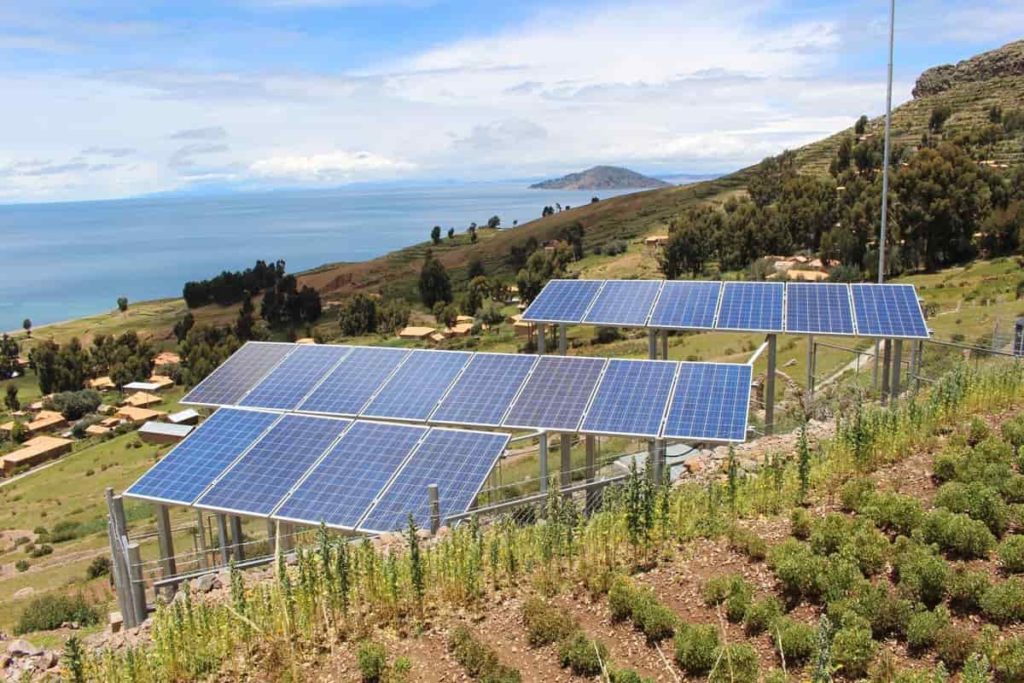
How to water your garden with solar power
Advantages of solar power system
Solar irrigation uses the sun’s energy to power a pump that delivers water to crops to help them grow. Some of the advantages of a simple solar irrigation system are:
- No grid connection is required.
- No electricity bill will be paid.
- No fuel is required.
- Durable requires minimal maintenance.
- Solar energy is always free from pollution and does not emit greenhouse gases after installation.
- Dependence on foreign oil and fossil fuels decreased.
- Renewable clean energy is available every year, even on cloudy days, producing some power. Unlike paying utility bills, the return on investment is virtually no maintenance because solar panels last more than 30 years.
- Ability to live grid-free if all electricity generated provides enough for the house/building.
- It can be installed anywhere, from a field to a building.
- Use batteries to store excess electricity for nighttime use.
- Solar energy can be used for heating the water, power plants and buildings, and even power cars.
- Safer efficiency than conventional electric current is constantly improving, so the exact size of solar available today will be more efficient tomorrow.
- Water usage requirements for solar power plants depend on the technology and climate conditions at the site.
- A solar-powered irrigation system ensures the field’s corpus is well watered daily. Unlike other energy sources such as biogas, coal, etc., solar energy does not emit greenhouse gases, reducing the severe impact on the ozone layer and the overall environment.
- As one of the most eco-friendly energy systems, solar irrigation does not create a lot of noise, unlike power generators. Also, this efficient system does not require much water to operate. Therefore, it saves more water that can be used for crops and farming.
- Solar energy has multiple uses in irrigation systems. Also, farmers can connect the surplus electricity to the electricity grid and sell it to the electricity company.
In case you missed it: How to Start Hydroponic Farming/Gardening from Scratch in India: A Step-By-Step Guide for Beginners

Design drip irrigation system layout
The key is a good irrigation design from the start. Ideally, you’ll want to build your system before planting. Of course, you can always add a drip watering system, but larger crops will be more challenging to maneuver around. Mapping out your garden will help you create the proper layout and help you spot problems you might not have noticed otherwise. Note dimensions and immovable structures and objects.
Considerations for designing your drip irrigation system
- The location of your water source and if there are any obstacles in the way.
- The distances you will want to run irrigation tubing.
- The designing system without crossing walkways or burying pipes under walkways.
- Use spaces along paths to grow vegetables and herbs.
- You are minimizing pipes and tubes for efficiency and laying out your system to use less water.
- Different garden areas may require different amounts of water (a more complex form of drip irrigation).
Building a successful drip irrigation system
These are pumps that transport water, equipped with solar cells. Though the solar energy absorbed by the cells is converted into electrical energy by generators, an electric motor drives the pump when needed. It is fine-tuned to use the right amount of water. An automated system also saves you from the time-consuming task of watering the garden. A solar-powered irrigation system uses a solar-powered water pumping system used in gardens to irrigate paddy fields, plants, vegetables, etc.
Recently, farmers in the agricultural field have faced many problems watering their plants to keep their crops green during the hot season. It is because they do not have a proper idea of the availability of electricity. Even if electricity is available, they must wait until the pitch is watered correctly. Thus this action prevents them from doing other actions. But, there is a solution: the automatic solar submersible pump control panel for irrigation.
For any solar-powered pumping system, the ability to move water is a function of power, flow, and pressure. These solar-powered water pumps are very cheap, durable, easy to install and require minimum maintenance compared to conventional water pumps. This system is an automatic irrigation system with a solar-powered irrigation pump. However, manually operating irrigation systems and monitoring soil water levels becomes difficult.
So this system uses solar energy by using photovoltaic cells instead of commercial electricity. Drip irrigation can be used for any of your water needs. The only difference between irrigating small gardens and large farming operations is the scale of your system. Large watering operations will require large drip tubes, pumps, and drippers. You can adjust the drip system to all landscapes and soil types. You can go around obstacles, over hills, and into trenches, so the sky’s the limit for how you want to design the drip irrigation system.
In case you missed it: How to Start Urban Farming/Gardening in India: Companies, Startups, Market, and PDF Guide
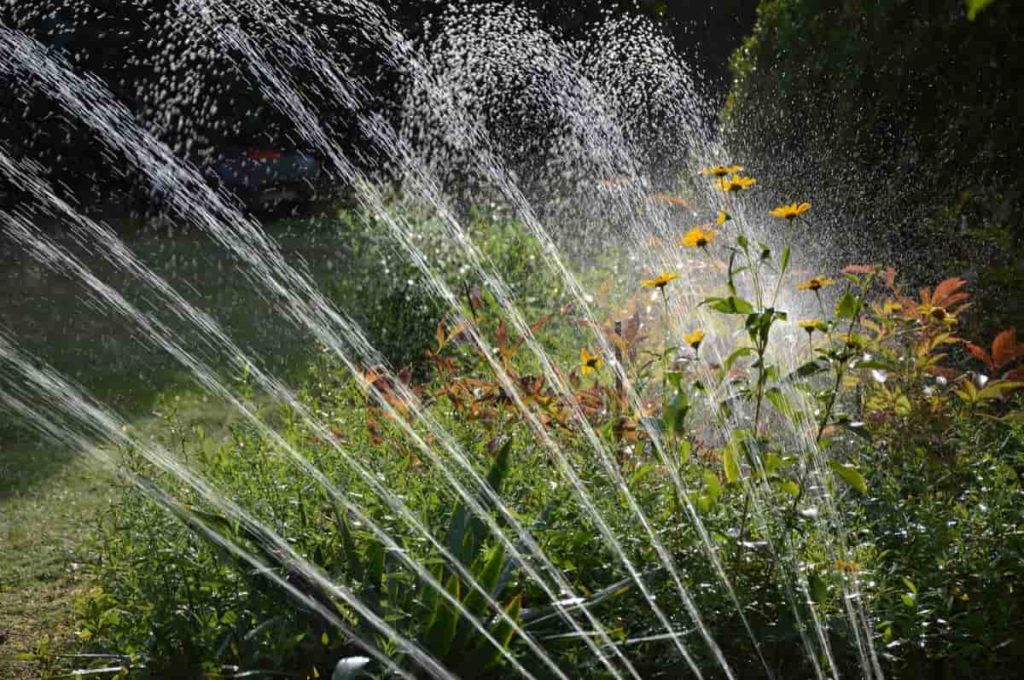
The proposed solar-based watering system
The different parts of the tank system are;
- Water tank
- Motor gun
- Water tap
- Water flow controller
- Pipe
- An electric switch is placed between the solar tracker and water tank systems. This switch controls the opening of the water tap. Therefore, even though solar energy is present, water will not flow from the outlet when the switch is off.
What is the need for solar-powered water pumps?
- 100% Grid Dependency – Pumps today are mostly grid-dependent. If the power goes out, the water pumps will not work. It can cause the whole house to stop working.
- Timely Scheduling – Since you can use solar energy freely during the day and when there is no daylight, you can use solar-powered water pumps, unlike traditional water pumps. Can work virtually 24*7 while doing.
- About 95% of hand pumps are now obsolete – so you will need some form of force/energy to draw underground water for your household tasks.
In houses – If the water motor is ½ Hp, you can easily use a 2 KW off-grid solar system. This solar system is ideal for big houses, shops, and offices. This solar system generates ten units per day, requires 200 square feet of roof space for installation, and provides a return on investment in 5.5 years with 3000 electricity savings per month.
If the water motor is about 1 Hp, you can use a 3 kW solar system to run it. This solar system is ideal for large homes, shops, and offices. This solar system generates 15 units per day, requires 300 square feet of rooftop space for installation, and provides a return on investment in 5.5 years with Rs. 4,500 electricity savings per month.
Components of a typical solar-powered pumping system
Major components of a solar-powered system include a solar panel array that powers a bore well pump or surface pump. The complete system’s size depends on the pump’s size, the amount of water required per day, and the power available from the solar panels. Water is often pumped from a bore well or river into a storage tank or directly into the field. A solar-powered irrigation system has three main parts: pump motor, controller, and solar panel. A good irrigation system promotes better agricultural practices.
In case you missed it: How to Start a Backyard Garden from Scratch: A Step-By-Step Guide for Beginners
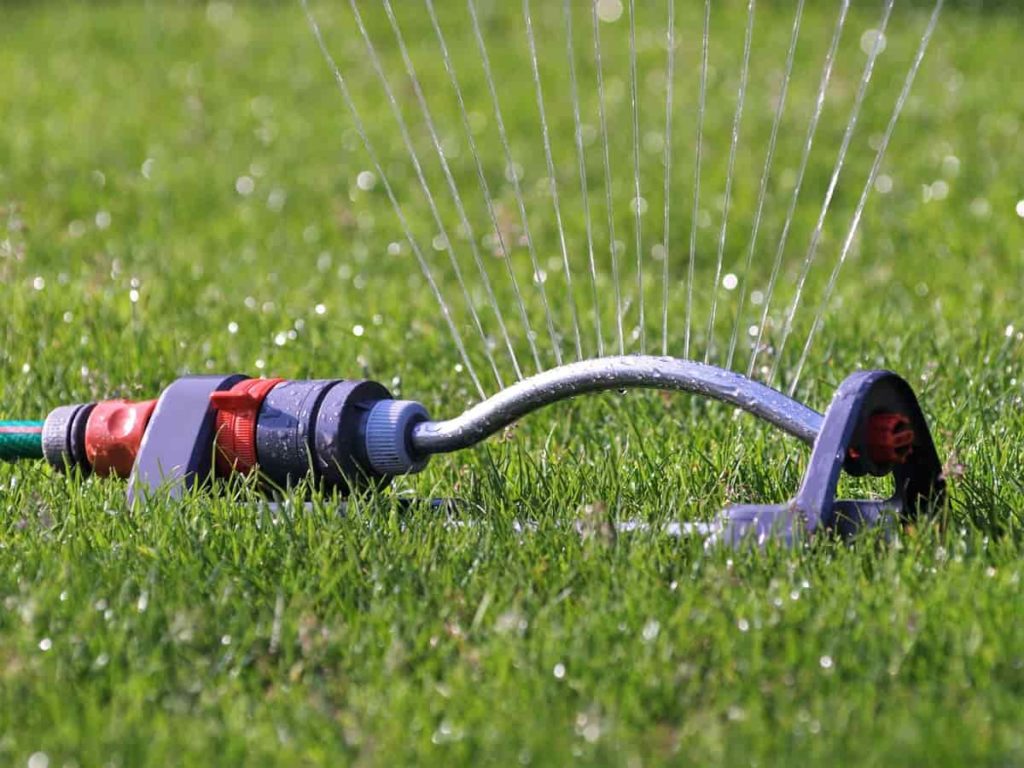
Solar energy is a growing source of energy generation and electricity supply. Thus, solar energy for irrigation has become increasingly important in agriculture as a reliable, clean energy solution for agricultural water management, especially in areas with high solar radiation. The main reason for using solar/sun for irrigation is that crops need more water when the sun is shining, and solar produces more energy when needed because it is directly from the sun and gains energy.
Whereas Solar Powered Irrigation System (SPIS) has a critical technology in the agricultural sector. In recent times, SPIS technologies are becoming a viable option for many farmers, including smallholders. In rural areas, solar energy can ensure access to energy for agriculture, especially for consumers who do not have reliable access to the power or electricity grid or where fuel is expensive and inaccessible. Other benefits may include increased access to water during dry spells and dry seasons and improved income, food, and nutrition security.
Water your gardening plants with solar power
Water your garden with rainwater using this efficient and eco-friendly solar-powered irrigation system. The irrigation system adapts to the weather conditions and ensures that all your plants get enough water. Moisture sensors also monitor current soil conditions to ensure plants are not over- or under-watered. A solar panel system was also installed to power the entire setup without needing the main connection.
Irrigation systems are weather-responsive automated water systems that use solar energy to detect the weather and adjust watering according to conditions and weather – providing precise irrigation to plants. The irrigation system connects to a rainwater container and distributes the appropriate water throughout your property. In addition, a solar-powered pump ensures that the soil is moist.
Then, the pump releases more water if the weather condition is dry and less if the weather is wet. After that, place the solar panel where it will get a lot of sun and rainwater will reach the pump in the tank. Then, run the hose from the pump to your plants and attach it to the nozzle. The hose is 15 meters long and can be adjusted to whatever length you want by cutting and modifying it.
Installing solar power in the garden – If you don’t have a greenhouse, you’ll likely place the solar panels on the ground rather than on a raised surface. It can be tricky, as the solar panels will have to face the direction that brings in the lightest, which will be towards the sun. Generally, solar panels come with some form of mounting, whether ground or advanced pole mount.
They are usually metal and must be pressed into the ground to ensure the panels are not going anywhere. Pole mounts are more advanced than terrestrial mounts, as they sit on a single pole and are inclined toward the sun. You’ll want to install your solar panels close to the area you intend to use them for, which is your garden.
In case you missed it: How to Start Organic Kitchen Gardening: Tips, Ideas, and A Step-By-Step Guide for Beginners
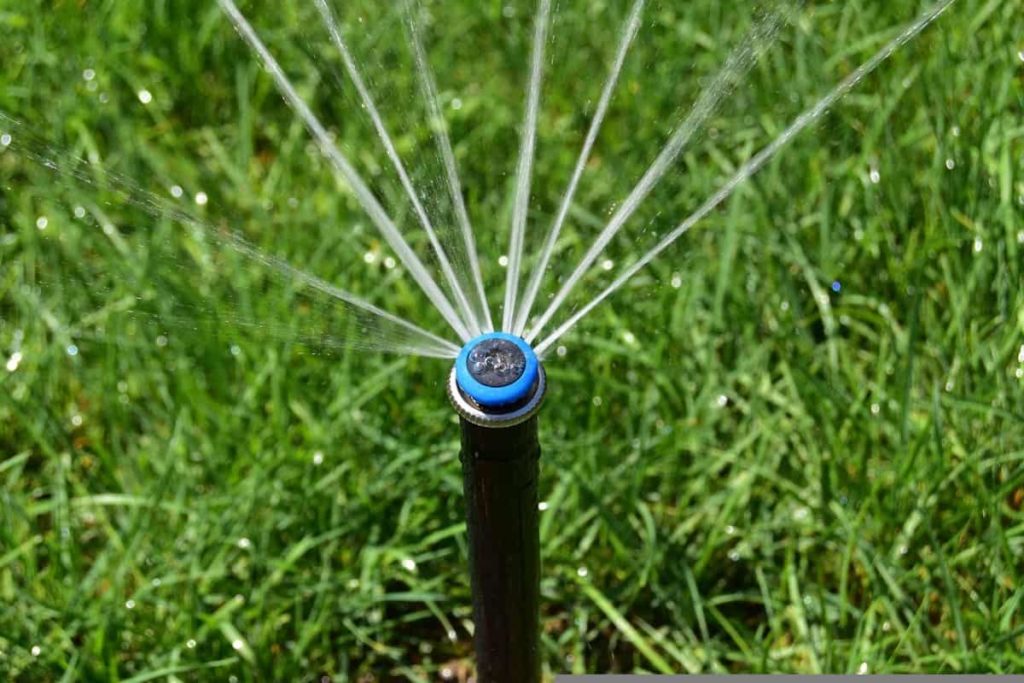
Water your greenhouse plants with solar power
Choosing the right irrigation system is critical to the growth of your plants. First, you want to ensure that plants get the proper water.
Solar Powered Greenhouse Fans – Additional PC fans in the greenhouse attached to solar panels are another way we use solar energy. Greenhouse ventilation is critical, and it is the primary way to install fans during the day to circulate air around your plants and help cool the air, especially on very hot days. However, fans can be expensive to run. So it makes sense to run away from them with solar panels. And it’s a cheap way to get fans.
As the development of low-carbon agriculture technology continues, the agricultural greenhouse is applied in wide areas. Essential measures for greenhouse planting are irrigation, fertilization, temperature and humidity control, light control, and CO2 concentration control. High temperatures in summer disrupt the normal growth of many vegetables.
The thin-film solar module used in the greenhouse can isolate the infrared rays and reduce the incoming heat to prevent the greenhouse’s temperature from being too high in the summer and afternoon. In winter and at night, the thin-film solar module can block the external infrared radiation when greenhouses lose heat and slow the temperature drop at night.
A solar greenhouse system provides power for lighting and ventilation. It can work with an LED system. It generates electricity to ensure plant growth during the day, and the LED system uses the electricity generated during the day to illuminate the plants at night. In addition, solar greenhouse systems can be used for pest control; redundant electricity produced can connect to the grid.
How to use solar panels in the garden?
In this proposed system, we use solar energy from solar panels to pump water from the bore well directly to the ground-level storage tank depending on the intensity of sunlight. It leads to substantial energy savings and efficient use of renewable energy. A valve is controlled using an intelligent algorithm that controls water flow to the field according to the soil moisture requirement.
In case you missed it: Drip Irrigation for Vegetables – a Full Guide
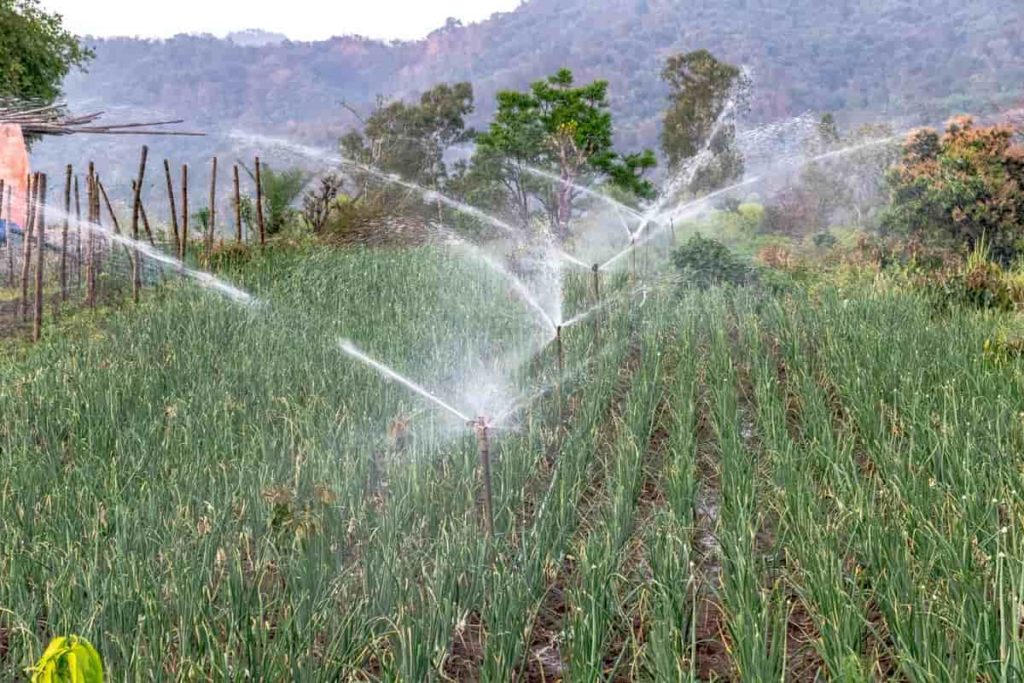
Soil moisture sensor detects the amount of soil moisture and controls the flow of water according to the moisture level required by the crop, thereby increasing the yield of crops. Solar panels are a money-saving and traditional way of powering basic things in the garden. You will find that most of the electricity needs in the garden can be met by installing solar power. Below are the things you can do with a solar power system:
- Lighting – Use solar energy to light your garden path or power those insect-repelling lights you turn on at night. You’ll be happy to see that your electricity bill will be less than leaving the lights on all night.
- Irrigation – You can use solar panels in the garden to power this irrigation system. Or use it to power your water system in general.
- Greenhouses – Solar panels are very useful for powering your greenhouse or garden shed, especially if the greenhouse or shed is small.
One end of your device’s hose needs to be connected to an open slot in your battery charger for a DC pump and solar panel. The other end of this hose is then connected to where standard household faucets are located.
- Types of Pesticides Used in Agriculture: A Beginner’s Guide
- Economical Aquaculture: A Guide to Low-Budget Fish Farming
- 15 Common Planting Errors That Can Doom Your Fruit Trees
- How to Make Houseplants Bushy: Effective Tips and Ideas
- Innovative Strategies for Boosting Coconut Pollination and Yield
- Pollination Strategies for Maximum Pumpkin Yield
- The Complete Guide to Chicken Fattening: Strategies for Maximum Growth
- Natural Solutions for Tulip Problems: 100% Effective Remedies for Leaf and Bulb-Related Issues
- Revolutionizing Citrus Preservation: Towards a Healthier, Greener Future
- Natural Solutions for Peony Leaf and Flower Problems: 100% Effective Remedies
- Maximizing Profits with Avocado Contract Farming in India: A Comprehensive Guide
- Natural Solutions for Hydrangea Problems: 100% Effective Remedies for Leaf and Flowers
- The Ultimate Guide to Choosing the Perfect Foliage Friend: Bringing Life Indoors
- From Sunlight to Sustainability: 15 Ways to Use Solar Technology in Agriculture
- The Ultimate Guide to Dong Tao Chicken: Exploring from History to Raising
- The Eco-Friendly Makeover: How to Convert Your Unused Swimming Pool into a Fish Pond
- Mastering the Art of Delaware Chicken Farming: Essentials for Healthy Backyard Flocks
- 20 Best Homemade Fertilizers for Money Plant: DIY Recipes and Application Methods
- How to Craft a Comprehensive Free-Range Chicken Farming Business Plan
- Brighten Your Flock: Raising Easter Egger Chickens for Beauty and Bounty
- How to Optimize Your Poultry Egg Farm Business Plan with These Strategies
- Subsidy for Spirulina Cultivation: How Indian Government Schemes Encouraging Spirulina Farmers
- Ultimate Guide to Raising Dominique Chickens: Breeding, Feeding, Egg-Production, and Care
- Mastering the Art of Raising Jersey Giant Chickens: Care, Feeding, and More
- Ultimate Guide to Raising Legbar Chickens: Breeding, Farming Practices, Diet, Egg-Production
- How to Raise Welsummer Chickens: A Comprehensive Guide for Beginners
- How to Protect Indoor Plants in Winter: A Comprehensive Guide
- Ultimate Guide to Grow Bag Gardening: Tips, Tricks, and Planting Ideas for Urban Gardeners
- Guide to Lotus Cultivation: How to Propagate, Plant, Grow, Care, Cost, and Profit
- Agriculture Drone Subsidy Scheme: Government Kisan Subsidy, License, and How to Apply Online
- Ultimate Guide to Raising Araucana Chickens: Breed Profile, Farming Economics, Diet, and Care
- Bringing Hydroponics to Classroom: Importance, Benefits of Learning for School Students
- Ultimate Guide to Raising Polish Chickens: Breed Profile, Farming Economics, Diet, and Care
- Ultimate Guide to Raising Australorp Chickens: Profile, Farming Economics, Egg Production, Diet, and Care
- Silkie Chicken Farming: Raising Practices, Varieties, Egg Production, Diet, and Care
- Sussex Chicken Farming: Raising Practices, Varieties, Egg Production, Diet and Care